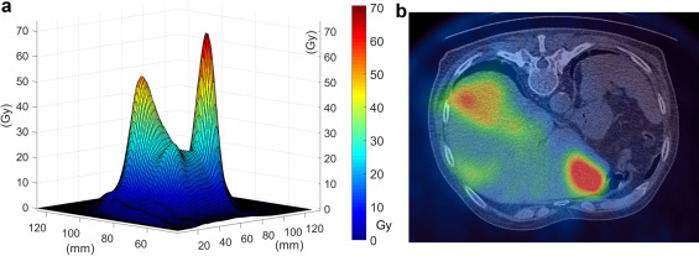Comparing calculated and experimental activity and dose values obtained from image-based quantification of Y-90 SPECT/CT Data.
Lotter K, Diemling M, Sohlberg A, Wiedner H, Haug A, Maringer FJ.
Selective internal radiation therapy (SIRT) is a treatment for various kinds of liver tumours by injecting Y-90 bearing microspheres into the liver vessels. To perform meaningful post-treatment dosimetry, quantitative imaging is performed.
Read complete articleMethods
This work uses a Monte-Carlo based reconstruction software with scatter and attenuation correction and collimator modelling that allows the quantification of 90Y bremsstrahlung SPECT/CT data. A dataset comprising 17 patients and measurements on a Jaszczak phantom, a NEMA IEC Body phantom and an anthropomorphic liver phantom are analysed and activities and dose values are acquired. These measured values are compared with applied activities and pre-treatment calculations, allowing to assess the quality of the SPECT reconstruction. A detailed uncertainty budget is presented, including uncertainties of the dose calibrator, the count rate, non-included interactions and other factors.

Results
The applied method is validated by finding measurements repeatable within the given uncertainty, and it is shown the influence of various parameters on the reconstruction process is negligible. Furthermore, activities and doses measured in the phantoms show good agreement with calculated values, if they are corrected for partial volume effects.
Conclusions
The strict observation of metrological requirements and the creation of an uncertainty budget increase the reliability and traceability of this novel approach to 90Y dosimetry. It gives an example of successful voxel-based dosimetry based on quantitative 90Y SPECT/CT image data.
Keywords
Activity concentration; Dosimetry; Liver phantom; Metrological quality; SIRT; SPECT quantification.
Copyright © 2021. Published by Elsevier GmbH.
Z Med Phys. 2021 Nov;31(4):378-387